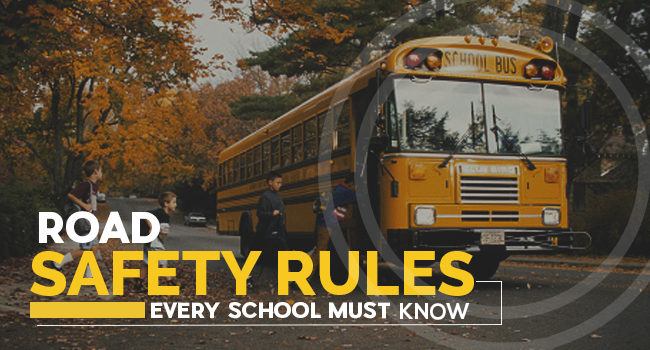Choosing the school bus stop for picking up and dropping children is one of the complicated tasks that the school fleet managers often encounter. Nevertheless, with the improved fleet management software and devices, the task is easier, although certain guidelines need to be followed:
1. Pick traffic routes with less traffic and lower traffic speed, so that the bus stops can be effortlessly managed
2. Stops should be chosen such that children and parents have sufficient space to walk along the sides of the road to reach the stop. It would be apt if they have separate pedestrian pathways for keeping the children away from the traffic
3. Stops, which require the school vehicle to turn away suddenly from the main road need to be avoided, especially the ones which require a left turn en route in those countries with right-handed driving rules. This is because the driver’s vision will be limited in those cases and can result in accidents
4. Consider the number of students at each bus stop. If there are numerous children at a particular bus stop, it might result in behavioural problems. When the number of children is below average, it might not be economically viable for the school bus fleets. Fleet managers need to form decisions after considerable analysis and the latest software will provide adequate support in decision-making. Hence, it is advisable to select the bus stops based on algorithms, with a close consideration of all these factors
5. Safety of the students should be considered. Nevertheless, while selecting the bus stop, protection from rain and sunshine should be provided. Moreover, confirm that students are able to reach the bus stop in extreme conditions such as heavy snowfall. Well-lit areas should be chosen in case the bus timings are early in the morning or late in the nights. Ideally, long travelling hours must be avoided for children at all times
6. Distance from the children’s homes to the bus stop and travel time should also be considered. If it is extremely high, it would be advisable to re-route the bus. For kindergarten students, pick up and drop at doorsteps should be provided wherever possible
7. Allocating bus stops around the corners, nearer to the zebra crossings or traffic signals should be avoided. Alighting and boarding the bus at such hazardous areas would be troublesome for the kids. Consequently, stops should not be fixed near the railroads or crossings.
8. Multi-lane roads also tend to have an enormous volume of vehicle traffic and hence it is wise to avoid it. Also, ensure that there is no need for the vehicles to reverse for approaching the stopping bay. The rear vision will be limited to the drivers and ordinarily not advisable for kids
9. In case, such conditions cannot be met absolutely, seek the assistance of the traffic authorities to place appropriate sign posts and boards so as to facilitate the students. Seek local support from parents or adults, who can act accordingly as cross guards or traffic volunteers to assist in such dangerous places.
10. The pedestrians should have a clear visibility of the oncoming traffic. Drivers should be able to view the students waiting at the bus stop in the mornings and also ensure that students waiting at the stops should also be able to view the drivers.
11. There is a 12 foot rule requirement stipulated by several countries, which mentions that the students and parents should stand at least 12 feet away from the roadway. This is based on the “sight-vision-distance” required according to scientists. However, the requirement will be modified, based on the need to enhance the field of vision.
12. Stops should be chosen away from commercial establishments and parks wherever possible.
13. Consider the state rules, regulations and policies regarding the fixing of bus stops. Adhere to them without fail and seek assistance in needy cases. Moreover, it would be wise to establish signs and stop boards after seeking permission from traffic authorities.







